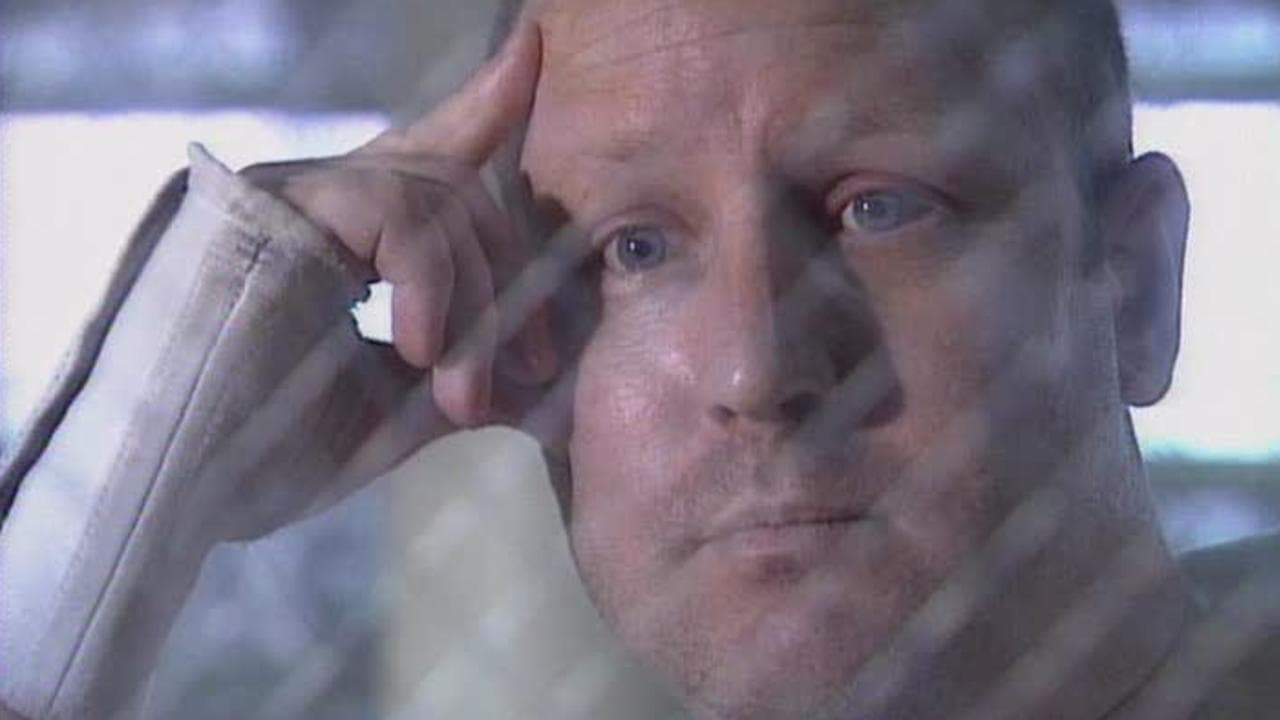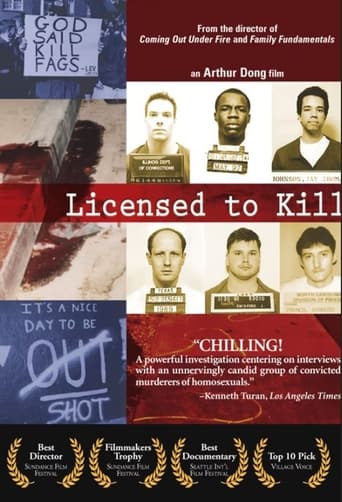

Old-fashioned homonegativity is quite apparent in the film Licensed to Kill by director and writer Arthur Dong. Old-fashioned homonegativity is based upon the idea of moral objection in general to homosexuality and/or gay and lesbians as individuals. This includes religious objections, myths, and strict adherence to normality. Jeffrey Swinford exemplifies homonegativity based upon religious objections. He believes that whatever is written in the bible is right and this includes the fact that you should be put to death if you are gay. The most disturbing part about Jeffrey Swinford's interview was his complete lack of remorse and his belief that what he had done made one less problem in the world. Kenneth Jr. French exemplifies homonegativity based upon myths. He was a military man before he murdered four people by opening fire in a restaurant. Kenneth Jr. French says he was voicing his opinion about his disapproval of gays in the military. The myth he associated with his objection is the belief that gay men are weaker then heterosexual men. He was afraid that this would in turn make the military look weak. He regrets that he killed four people but will not apologize for his views towards gays. Jay Johnson exemplifies homonegativity based upon the strict adherence to normality. Jay Johnson is a gay man himself but did not like or accept the fact that he was gay. He felt that he was not normal and was disgusted by the thoughts and behaviours he was eliciting. The shame he was experiencing and his perception that being gay was not normal may have led him to murder the gay man in the park. These are only three examples of the old-fashioned negativity that is presented in the film. Also, many of the individuals exemplify multiple aspects of old-fashioned negativity.
... View MoreOne of the common themes in this movie is the question of remorse. Of the men being interviewed, very few showed any type of remorse for taking the life of another human being(s). Most of these murderers made what seemed to be excuses for their crimes. Alcohol, being abused as a child, and self-defense seemed to be the common answers for why they chose to shoot, stab, and kill these individuals. While these excuses did exist there seemed to be a much deeper driven force that led to such crimes. This was the hate, judgment and prejudice that most of these men admitted they possessed. These men possessed homonegativity, and most explained by the values that they held against gay men. Sheriff Dallas, a man who claims he targeted gay men only because they were easy targets and not because of homonegativity, still showed little remorse. When referring to the incident where he shot the man he explained how his intent was not to kill, rather that the bullet was responsible for his crime. Kenneth Train was the only exception of all the men interviewed. However, he was remorseful for killing four people at a restaurant who were most likely not gay. If his victims were gay men, there might not have been any remorse on his behalf. From my perspective as a viewer even though Train showed remorse for his victims he held the strongest Value Expression of homonegativity. He undermined gay men as humans; he believed that they weakened America as a nation. Such evidence proved that Train showed the strongest homonegativity of all the men interviewed. 11080553
... View More11107951 Arthur Dong's documentary License to Kill offers the interested viewer an excellent opportunity to be informed about both the nature and motivations behind hate crimes which target sexual minorities -specifically gay men. Throughout the film, Dong introduces us to several convicted perpetrators of hate crime. The criminals presented are all male, and have been convicted with murder. The victims of all but one individual interviewed were gay males. The motivations behind these vicious hate crimes are varied, but a significant proportion of the criminals involved attempted to mitigate their actions by claiming some religious significance. This religious attribution is evident of "Old school homonegativity". Old school homonegativity states that negative actions taken against gay men and lesbian women are the result of religious beliefs, myths, or a strict adherence to perceived normality. Thus, these may be seen as chief motivations in the perpetuation of these anti-gay hate crimes. Many of the men Dong spoke with indicated that they saw gay men as weak and therefore, easy targets. According to theories concerned with hegemonic masculinity, the masculinity of gay men is seen as being on par with femininity and a destabilizing force against which dominant masculinity aggresses. The perception of gay men as weak and easy targets is likely an external expression of this aggressive attitude taken on by those who wish to reinforce -consciously or unconsciously- the socially dominant idea of masculinity while subverting those viewpoints which seek to challenge it. Dong's film highlights the negative effects of ignorance and the devastating outcomes which can result. I would recommend this film to anyone wishing to gain knowledge related to gay hate crime as well as those wishing to understand the social ramifications of hate crime in general.
... View More11098143 The film, Licensed to Kill, is illuminating in the sense that it offers perspective on the motivators for the homonegative behaviours evidenced in the film. One of the recurring themes amongst motivators for attacking gay men is the perception that gay men are weak individuals. By indicating that gay men are perceived as weak people, the attackers' perspectives place gay men in a subordinate position to straight men within the context of greater society. Due to this placement within a social hierarchy, it becomes unsurprising that gay men would become victims. What the film fails to concretely address is why the attackers feel that gay men are weak individuals. One can assume that this attribution of "weakness" may be due to the manner in which some gay men present their masculinity. The masculinity in question may not conform to the gender binaries present within our society, leading people to understand a gay man's masculinity as one that is compromised. A masculinity that is perceived as compromised may be inferred to be weak, which results in the negative social stigma gay men must navigate. However, this construct of why the attackers believe that gay men are weak is merely speculation, and the viewer would benefit from actual explanation from one of the interviewees within the film. Biblical explanations do not justify the "weakness" associated with gay men, and further clarification is needed. The director assumes the audience to realize that the association of gay men with "weakness" is inaccurate, and not grounded in any reality. Gay men are not naturally inferior in any tangible regard, having no inherent physical or emotional differences. Stereotypes have largely dictated the presumed difference that exits between gay men and the rest of straight society. The documentary remains engaging and worth viewing, regardless of the omission.
... View More